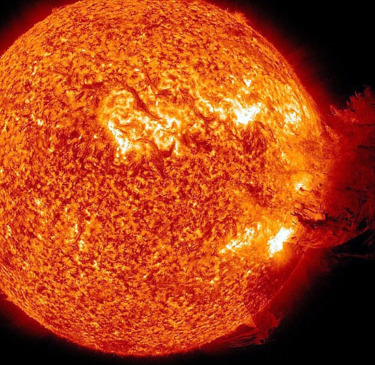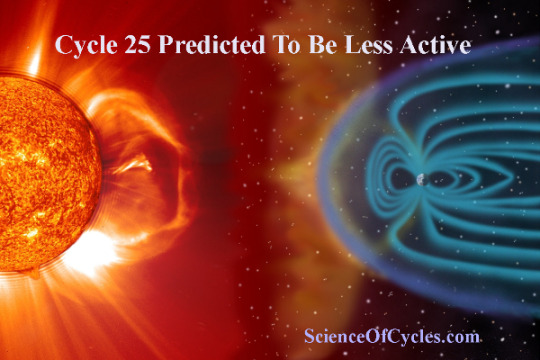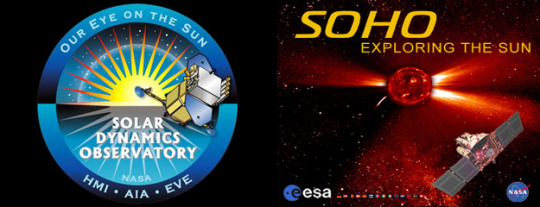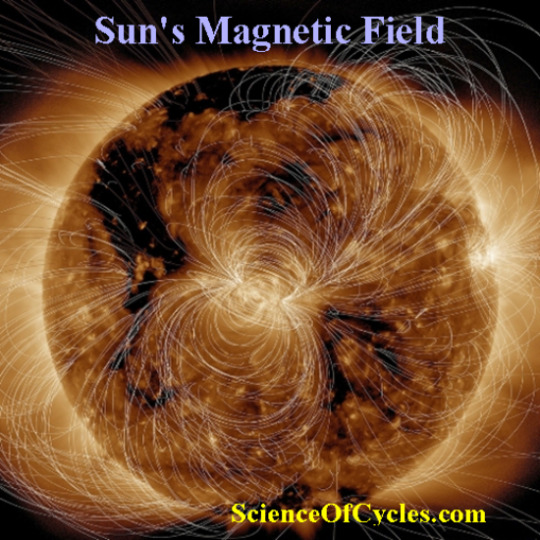#solardynamicsobservatory
Explore tagged Tumblr posts
Text
Plasma loops bigger than the Earth twirled across the Sun, as seen by the Solar Dynamics Observatory spacecraft.
1 note
·
View note
Photo

The #Sun emitted a strong #solarflare peaking at 3:16 p.m. ET on Feb. 17, 2023. #NASA #SolarDynamicsObservatory watches the Sun constantly, captured this image of the event. #solarsystem #solar #astronomy #cme #coronalmassejection #sunflare https://www.instagram.com/p/Co1EO1JOYHe/?igshid=NGJjMDIxMWI=
#sun#solarflare#nasa#solardynamicsobservatory#solarsystem#solar#astronomy#cme#coronalmassejection#sunflare
2 notes
·
View notes
Link
नासा ने अपने यूट्यूब चैनल पे एक वीडियो अपलोड किया है और जिसका टाइटल है -' ए डिकेड ऑफ़ सन ' | सबसे पहले आप को बताता हूँ की आखिर ये ही टाइटल क्यों दिया गया |बात ये है की नासा 2 जून 2010 से 1 जून २०२० तक सूर्य पर अध्ध्यन किया गया है | इन दस सालों में सूर्य में हुए बदलाव को नासा ने बताया है | नासा ने बताया की सोलर आब्जेवट्री ने सूर्य पर 10 साल तक नज़र राखी | और 45 करोड़ हाई रिजोलुशन वाली तस्वीर ली और 2 करोड़ गीगाबाइट डाटा भी इक्ठा किया |नासा के अनुसार , सूर्य का चुंबकीय क्षेत्र एक से गुज़रता है जिसे सौर चक्र कहा जाता है |हर 10 साल बाद सूर्य का चुंबकीय क्षेत्र बदल जाता है |
#हाई रिजोलुशन#nonstopforovera#fulldecade#डिकेडऑफ़सन#टेम्प्रेचर#दस साल#नासायूट्यूबचैनल#सूरज#सूर्य#सोलरडायनामिकऑब्जर्वेटरी#nasa#NASAmissions#SDO#SolarDynamicsObservatory#SolarObserverTimeLapseofSun#unblinkingeye#watchingtheSun
1 note
·
View note
Text
A Year on the Sun Through Our Satellite’s Eyes
Did you know we’re watching the Sun 24/7 from space?
We use a whole fleet of satellites to monitor the Sun and its influences on the solar system. One of those is the Solar Dynamics Observatory. It’s been in space for eight years, keeping an eye on the Sun almost every moment of every day. Launched on Feb. 11, 2010, this satellite (also known as SDO) was originally designed for a two-year mission, but it’s still collecting data to this day — and one of our best ways to keep an eye on our star.
To celebrate another year of SDO, we’re sharing some of our favorite solar views that the spacecraft sent back to Earth in 2017.
March: A long spotless stretch

For 15 days starting on March 7, SDO saw the yolk-like spotless Sun in visible light.
The Sun goes through a natural 11-year cycle of activity marked by two extremes: solar maximum and solar minimum. Sunspots are dark regions of complex magnetic activity on the Sun’s surface, and the number of sunspots at any given time is used as an index of solar activity.
Solar maximum = intense solar activity and more sunspots
Solar minimum = less solar activity and fewer sunspots
This March 2017 period was the longest stretch of spotlessness since the last solar minimum in April 2010 – a sure sign that the solar cycle is marching on toward the next minimum, which scientists expect in 2019-2020. For comparison, the images on the left are from Feb. 2014 – during the last solar maximum – and show a much spottier Sun.
June: Energized active regions

A pair of relatively small but frenetic active regions – areas of intense and complex magnetic fields – rotated into SDO’s view May 31 – June 2, while spouting off numerous small flares and sweeping loops of plasma. The dynamic regions were easily the most remarkable areas on the Sun during this 42-hour period.
July: Two weeks in the life of a sunspot
youtube
On July 5, SDO watched an active region rotate into view on the Sun. The satellite continued to track the region as it grew and eventually rotated across the Sun and out of view on July 17.
With their complex magnetic fields, sunspots are often the source of interesting solar activity: During its 13-day trip across the face of the Sun, the active region — dubbed AR12665 — put on a show for our Sun-watching satellites, producing several solar flares, a coronal mass ejection and a solar energetic particle event.
August: An eclipse in space

While millions of people in North America experienced a total solar eclipse on Aug. 21, SDO saw a partial eclipse from space. SDO actually sees several lunar transits a year from its perspective – but an eclipse on the ground doesn’t necessarily mean that SDO will see anything out of the ordinary. Even on Aug. 21, SDO saw only 14 percent of the Sun blocked by the Moon, while most US residents saw 60 percent blockage or more.
September: A spate of solar activity

In September 2017, SDO saw a spate of solar activity, with the Sun emitting 31 notable flares and releasing several powerful coronal mass ejections between Sept. 6-10. Solar flares are powerful bursts of radiation, while coronal mass ejections are massive clouds of solar material and magnetic fields that erupt from the Sun at incredible speeds.
One of the flares imaged by SDO on Sept. 6 was classified as X9.3 – clocking in at the most powerful flare of the current solar cycle. The current cycle began in December 2008 and is now decreasing in intensity, heading toward solar minimum. During solar minimum, such eruptions on the Sun are increasingly rare, but history has shown that they can nonetheless be intense.
September: A trio of tempests

Three distinct solar active regions with towering arches rotated into SDO’s view over a three-day period from Sept. 24-26. Charged particles spinning along the ever-changing magnetic field lines above the active regions trace out the magnetic field in extreme ultraviolet light, a type of light that is typically invisible to our eyes, but is colorized here in gold. To give some sense of scale, the largest arches are many times the size of Earth.
December: A curling prominence

SDO saw a small prominence arch up and send streams of solar material curling back into the Sun over a 30-hour period on Dec. 13-14. Prominences are relatively cool strands of solar material tethered above the Sun’s surface by magnetic fields.
December: Solar question mark

An elongated coronal hole — the darker area near the center of the Sun’s disk — looked something like a question mark when seen in extreme ultraviolet light by SDO on Dec. 21-22. Coronal holes are magnetically open areas on the Sun that allow high-speed solar wind to gush out into space. They appear as dark areas when seen in certain wavelengths of extreme ultraviolet light.
For all the latest on the Solar Dynamics Observatory, visit nasa.gov/sdo. Keep up with the latest on the Sun on Twitter @NASASun or at facebook.com/NASASunScience.
Make sure to follow us on Tumblr for your regular dose of space: http://nasa.tumblr.com
#nasa#space#sun#heliophysics#solar#observatory#SolarDynamicsObservatory#spacecraft#solardynamics#energy#magneticfield#cme#solarflare#eclipse#totalsolareclipse
2K notes
·
View notes
Photo

☀️ #sun #smile #smiling #smilingsun #nasa #solardynamicsobservatory #space #earth #moon #picture #photo #art #artwork #drawing #illustration #cartoon#comic #comicbookart #webcomic #characterdesign #digital #digitalart #digitalartwork #digitaldrawing #digitalillustration #digitalartist #penstagram #instaart #artstagram #leozztt https://www.instagram.com/p/Ck1gW9PSi76/?igshid=NGJjMDIxMWI=
#sun#smile#smiling#smilingsun#nasa#solardynamicsobservatory#space#earth#moon#picture#photo#art#artwork#drawing#illustration#cartoon#comic#comicbookart#webcomic#characterdesign#digital#digitalart#digitalartwork#digitaldrawing#digitalillustration#digitalartist#penstagram#instaart#artstagram#leozztt
0 notes
Photo

Posted @withrepost • @cosmoslegacy On August 31, 2012 a long filament of solar material that had been hovering in the sun's atmosphere, the corona, erupted out into space. The coronal mass ejection, or CME, traveled at over 900 miles per second. The CME did not travel directly toward Earth, but did connect with Earth's magnetic environment, or magnetosphere, causing aurora to appear on the night of Monday, September 3. Credit: NASA/GSFC/SDO ✨ Follow @cosmoslegacy for More Astronomy Content ✨ #sun #solarsystem #solardynamicsobservatory #nasa #universe #cosmos #space #astronomy #astrophysics #physics #astrophotography #astrophoto #science #cosmoslegacy https://www.instagram.com/p/CkOvr3XPB28/?igshid=NGJjMDIxMWI=
#sun#solarsystem#solardynamicsobservatory#nasa#universe#cosmos#space#astronomy#astrophysics#physics#astrophotography#astrophoto#science#cosmoslegacy
0 notes
Text
इतिहास में पहली बार इतनी नजदीक से ली गई सूर्य की तस्वीरें, दिखीं अनगिनत आग की लपटें

चैतन्य भारत न्यूज केप केनवेरल. हमेशा से ही सूर्य रहस्य और आकर्षण का केंद्र बना हुआ है। सूर्य के बेहद ज्याद��� तापमान और पृथ्वी से दूरी की वजह से भले ही इंसान अब तक सूर्य तक नहीं पहुंच सका हो लेकिन नासा के ऑर्बिटर की मदद से सूर्य की सबसे नजदीकी तस्वीर सामने आई है। तस्वीर में हर जगह पर अनगिनत आग जलती दिख रही हैं। #SolarOrbiter has made its first close pass by the Sun, studying our star and space with a comprehensive suite of instruments — and the data is already revealing previously unseen details. This is #TheSunUpClose. https://t.co/rVMjz45DoY pic.twitter.com/YLKBXRNQZb — NASA Sun & Space (@NASASun) July 16, 2020 नासा ने यह ऑर्बिटर फरवरी में लॉन्च किया था। नासा ने दावा किया है कि ये तस्वीरें अब तक की सूरज के सबसे नजदीक की तस्वीरें हैं। ऑर्बिटर ने जब तस्वीरें लीं तो उस समय यह सूर्य से लगभग 7 करोड़ 70 लाख किलोमीटर की दूरी पर यानी कि धरती और सूरज के बीच लगभग आधे रास्ते में था। सामने आई तस्वीर में छोटे-छोटे आग के गोले दिखाई पड़ रहे हैं। इन छोटे-छोटे आग के गोलों को कैंपफायर कहते हैं।

नासा का पार्कर सोलर प्रोब सौर ऑर्बिटर की तुलना में सूरज के बहुत करीब उड़ रहा है। इस वजह से सोलर ऑर्बिटर की नई तस्वीरों में पीले और गहरे धुएं के रंग की लहरों को दिखाया गया है।

सूर्य की इतनी नजदीक और इतने छोटे पैमाने पर खींची गईं ये तस्वीरें काफी कीमती हैं। सूरज की इन तस्वीरों को कैप्चर करने वाले उपकरण के प्रमुख वैज्ञानिक और बेल्जियम के रॉयल ऑब्जर्वेटरी के डेविड बर्गमान्स ने कहा यह संभव नहीं है कि हमें इतनी अच्छी तस्वीरें मिली हैं। Read the full article
#nasa#Nasashare10#nasasunvideo#Scientist#SDO#solardynamicsobservatory#stunningclosestphotoofsun#sun#sunclosestphoto#sunoriginalphoto#sunoriginalvideo#sunphoto#sunrealphoto#sunvidep#timelapsevideoofsun#USSpaceAgency#नासा#नासासूर्यवीडियो#सूरज#सूर्य#सूर्यअसलफोटो#सूर्यकीअसलीतस्वीर#सोलरडायनमिकऑब्जर्वेटरी
0 notes
Photo










Solar Dynamics Observatory
The Solar Dynamics Observatory (SDO) is a NASA mission which has been observing the Sun since 2010. Launched on February 11, 2010, the observatory is part of the Living With a Star (LWS) program. The goal of the LWS program is to develop the scientific understanding necessary to effectively address those aspects of the connected Sun–Earth system directly affecting life and society. The goal of the SDO is to understand the influence of the Sun on the Earth and near-Earth space by studying the solar atmosphere on small scales of space and time and in many wavelengths simultaneously. SDO has been investigating how the Sun's magnetic field is generated and structured, how this stored magnetic energy is converted and released into the heliosphere and geospace in the form of solar wind, energetic particles, and variations in the solar irradiance.
Read more at: NASA, Wikipedia
Image credit: NASA, SDO, AIA, HMI, EVE & Stuart Rankin
#sdo#nasa#solardynamicsobservatory#som#sun#magneticfield#campomagnetico#tempestadesolar#ventosolar#solarwind#particles#particulas#cme#astronomy#astronomia#plasma#star#estrela#space
4K notes
·
View notes
Photo

Nasa posts a photo of Sun whose active spots make it look like a Jack-o-lantern! The image was captured by NASA's Solar Dynamics Observatory, or SDO, which watches the sun at all times from its orbit in space. . #jackolanternsun #nasatv #halloween #spooky #science #sun #solardynamicsobservatory https://www.instagram.com/p/B4LSHEtAnVG/?igshid=izyl0knl3v78
0 notes
Text
BREAKING NEWS: NASA Predicts Solar Cycle 25 Weakest in Last 200 Years
The forecast for the next solar cycle says it will be the weakest of the last 200 years. Research now underway has found a more reliable new method to predict this space weather. The maximum of this next cycle - measured in terms of sunspot numbers, could be 30 to 50% lower than the most recent one - Cycle 24. The results show the next cycle will start in 2020 and reach its maximum in 2025.

The new research was led by Irina Kitiashvili, a researcher with the Bay Area Environmental Research Institute at NASA's Ames Research Center, in California's Silicon Valley. It combined observations from two NASA space missions; Solar and Heliospheric Observatory and the Solar Dynamics Observatory with data collected since 1976 from the ground-based National Solar Observatory.

One challenge for researchers working to predict the Sun's activities is that scientists do not yet completely understand the inner workings of our star. Some factors that play out deep inside the Sun cannot be measured directly. They have to be estimated from measurements of related phenomena on the solar surface like sunspots, coronal holes and filaments. Kitiashvili's method differs from other prediction tools in terms of the raw material for its forecast. Previously, researchers used the number of sunspots to represent indirectly the activity of the solar magnetic field. The new approach takes advantage of direct observations of magnetic fields emerging on the surface of the Sun.

NASA has been assigned to procure American astronauts to the Moon in the next five years with a landing on the lunar South Pole. With a calm and quiet space weather forecast for the coming decade, it is a great time to explore. _______________ Science Of Cycles keeps you tuned-in and knowledgeable of what we are discovering, and how some of these changes will affect our communities and ways of living.

Read the full article
#cycle25#cycle25prediction#IrinaKitiashvili#NASAPredictsSolarCycle25WeakestinLast200Years#NationalSolarObservatory#SolarandHeliosphericObservatory#solarcycle25#SolarDynamicsObservatory
0 notes
Video
NASA’s NuSTAR Telescope Reveals Hidden Light Shows on the Sun by NASA's Marshall Space Flight Center Via Flickr: Even on a sunny day, human eyes can’t see all the light our nearest star gives off. A new image displays some of this hidden light, including the high-energy X-rays emitted by the hottest material in the Sun’s atmosphere, as observed by NASA’s Nuclear Spectroscopic Telescope Array (NuSTAR). While the observatory typically studies objects outside our solar system – like massive black holes and collapsed stars – it has also provided astronomers with insights about our Sun. In this composite image, NuSTAR data is represented as blue and is overlaid with observations by the X-ray Telescope (XRT) on the Japanese Aerospace Exploration Agency’s Hinode mission, represented as green, and the Atmospheric Imaging Assembly (AIA) on NASA’s Solar Dynamics Observatory (SDO), represented as red. NuSTAR’s relatively small field of view means it can’t see the entire Sun from its position in Earth orbit, so the observatory’s view of the Sun is actually a mosaic of 25 images, taken in June 2022. The high-energy X-rays observed by NuSTAR appear at only a few locations in the Sun’s atmosphere. By contrast, Hinode’s XRT detects low-energy X-rays, and SDO’s AIA detects ultraviolet light – wavelengths that are emitted across the entire face of the Sun. Image Credit: NASA/JPL-Caltech/JAXA #nasa #marshallspaceflightcenter #msfc #heliophysics #sun #space #solar #observation #star #astronomy #science #hinode #SDO #SolarDynamicsObservatory #NuSTAR Read More More about NuSTAR More about Solar Dynamics Observatory More about Hinode NASA Media Usage Guidelines
#NASA#NASA's#Marshall#Space#Flight#Center#Heliophysics#Sun#Hinode#NuSTAR#SDO#Solar Dynamics Observatory#Goddard Space Flight Center#GSFC#flickr
4 notes
·
View notes
Text
सूर्य कितना बदल गया है ?
नासा ने अपने यूट्यूब चैनल पे एक वीडियो अपलोड किया है और जिसका टाइटल है -' ए डिकेड ऑफ़ सन ' | सबसे पहले आप को बताता हूँ की आखिर ये ही टाइटल क्यों दिया गया |बात ये है की नासा 2 जून 2010 से 1 जून २०२० तक सूर्य पर अध्ध्यन किया गया है | इन दस सालों में सूर्य में हुए बदलाव को नासा ने बताया है | नासा ने बताया की सोलर आब्जेवट्री ने सूर्य पर 10 साल तक नज़र राखी | और 45 करोड़ हाई रिजोलुशन वाली तस्वीर ली और 2 करोड़ गीगाबाइट डाटा भी इक्ठा किया |नासा के अनुसार , सूर्य का चुंबकीय क्षेत्र एक से गुज़रता है जिसे सौर चक्र कहा जाता है |हर 10 साल बाद सूर्य का चुंबकीय क्षेत्र बदल जाता है | ये तस्वीर सूर्य की सबसे बाहरी वायुमंडलीय परत को दर्शाता है | ये वीडियो अपलोड होते ही वायरल हो गया था |अब तक यूट्यूब पे 6 लाख से ज्यादा लोगों ने देख लिया था | सूरज या सूर्य हमारे लिए रहस्य ही बना रहा क्योकि यहाँ का टेम्प्रेचर बहुत ही हाई है | लेकिन फिर पुरे विश्व के वैज्ञानिक सूर्य के बारे में जानने में लगे हुए है | उसका ही एक तरह से उदहारण है | इस पुरे वीडियो में उन दस सालों के हर एक सेकंड में जो सूर्य में बदलाव हुए सबको कैप्चर किया गया है | नासा का सोलर डायनामिक ऑब्जर्वेटरी आपने आँख की पलके भी एक सेकंड के लिए नहीं झपकाई -ये जो भी इमेज है वो सोलर डायनामिक ऑब्जर्वेटरी सूर्य की चित्र 0 .७५ सेकंड में ले लिया करता है | और ये पुरे 10 साल करने के बाद नासा ने इसे जारी किया है |नासा वैसे कई प्रोजेक्ट पे काम कर रही है |ये जब भी कुछ करता है पूरी दुनिया की नज़र आके इसपे टिक जाती है |
पूरा जानने के लिए -https://bit.ly/31oDkRx
#सोलरडायनामिकऑब्जर्वेटरी#हाई रिजोलुशन#सूर्य#नासायूट्यूबचैनल#सूरज#दस साल#टेम्प्रेचर#डिकेडऑफ़सन#ulldecade#nasa#NASAmissions#SDO#SolarDynamicsObservatory#SolarObserverTimeLapseofSun#unblinkingeye#watchingtheSun#fulldecade
1 note
·
View note
Text
The Moon Just Photobombed NASA’s Solar Dynamics Observatory
On May 25, 2017, the moon photobombed one of our sun-watching satellites by passing directly between the satellite and the sun.

The Solar Dynamics Observatory, or SDO, orbits Earth and watches the sun nearly 24/7 — except when another body, like the moon, gets in the way. These lunar photobombs are called transits, the generic term for when any celestial body passes in front of another.
Transits are one way we detect distant worlds. When a planet in another star system passes in front of its host star, it blocks some of the star’s light so the star appears slightly dimmer. By monitoring changes in a star’s light over time, scientists can deduce the presence of a planet, and even determine what its atmosphere is like. This method has been used to discover thousands of planets, including the TRAPPIST-1 planets.

SDO sees lunar transits about twice a year, and this one lasted about an hour with the moon covering about 89 percent of the sun at the peak of its journey across the sun’s face.
When they’re seen from Earth, we call lunar transits by another name: eclipses.

Solar eclipses are just a special kind of transit where the moon blocks all or part of our view of the sun. Since SDO’s view of the sun was only partially blocked, it saw a partial eclipse. Later this year, on Aug. 21, a total eclipse will be observable from the ground: The moon will completely block the sun’s face in some parts of the US, creating a total solar eclipse on a 70-mile-wide stretch of land, called the path of totality, that runs from Oregon to South Carolina.
Throughout the rest of North America — and even in parts of South America, Africa, Europe and Asia — the moon will partially obscure the sun, creating a partial eclipse. SDO will also witness this partial eclipse.

Total solar eclipses are incredible, cosmic coincidences: The sun is about 400 times wider than the moon, but it also happens to be 400 times farther away, so the sun and moon appear to be the same size in our sky. This allows the moon to completely block the sun when they line up just right.

Within the path of totality, the moon completely obscures the sun’s bright face, revealing the comparatively faint corona — the sun’s pearly-white outer atmosphere.

It’s essential to observe eye safety during an eclipse. You must use proper eclipse glasses or an indirect viewing method when any part of the sun’s surface is exposed, whether during the partial phases of an eclipse, or just on a regular day. If you’re in the path of totality, you may look at the eclipse ONLY during the brief moments of totality.

A total solar eclipse is one of nature’s most awe-inspiring sights, so make your plans now for August 21! You’ll also be able to see the eclipse cross the country that day through the eyes of NASA – including views of the partial eclipse from SDO – on NASA TV and at nasa.gov.
Learn more about the August eclipse — including where, when, and how to safely see it — at eclipse2017.nasa.gov and follow along on Twitter @NASASun.
3K notes
·
View notes
Photo

Photography to take note of #ObdurateEssentials #Halloween #Halloween2018 #AllSaintsEve #AllHallowsEve #NASA #SDO #SolarDynamicsObservatory #Sun #Star #Stars #ActiveRegions #Energy #Light #UltravioletWavelengths #Ultraviolet #Wavelengths #Corona #JackOLantern #Pumpkin #Space #OuterSpace #PhotographyToTakeNoteOf https://www.instagram.com/p/BpnUVpSFW6W/?utm_source=ig_tumblr_share&igshid=bd0605vvstez
#obdurateessentials#halloween#halloween2018#allsaintseve#allhallowseve#nasa#sdo#solardynamicsobservatory#sun#star#stars#activeregions#energy#light#ultravioletwavelengths#ultraviolet#wavelengths#corona#jackolantern#pumpkin#space#outerspace#photographytotakenoteof
0 notes
Text
नासा ने 10 साल तक सूरज पर रखी नजर, 61 मिनट का आश्चर्यजनक वीडियो किया शेयर

चैतन्य भारत न्यूज वॉशिंगटन. जिस सूरज को हम रोजाना देखते है क्या आपको याद है वह 10 साल पहले कैसा दिखता था? अमेरिका की अंतरिक्ष एजेंसी NASA भी इसी सवाल का जवाब खोजने में जुटी हुई है। नासा की सोलर डायनमिक ऑब्जर्वेटरी यानी SDO ने पूरे 10 साल से सूरज पर नजर रखी और इसका एक वीडियो बनाया है। इस वीडियो में सूरज की हर गतिविधि रिकॉर्ड की गई है। सोशल मीडिया पर यह वीडियो तेजी से वायरल हो रहा है। 10 सालों तक सूरज पर नजर रखी अंतरिक्ष में पृथ्वी का चक्कर काटते हुए इस स्पेसक्राफ्ट ने सूरज की 42 करोड़ से भी ज्यादा हाई रेजॉलूशन तस्वीरें ली हैं। नासा ने बताया कि सोलर ऑब्जर्वेटरी ने 10 सालों तक सूर्य पर नजर रखी। साथ ही उसने सूर्य की 42.5 करोड़ हाइ-रिजॉल्यूशन वाली तस्वीरों को लिया। इसके अलावा दो करोड़ गीगाबाइट (जीबी) डाटा भी जमा किया। This #SunDay, take in a decade of the Sun, as seen by our Solar Dynamics Observatory satellite. You'll see the Sun change as its activity rises and falls over the years, part of its regular cycle. Watch the hour-long time lapse in 4K on YouTube: https://t.co/teJT2PkXQQ pic.twitter.com/ulh0hUeTkO — NASA Sun & Space (@NASASun) June 28, 2020 ऐसे ली गईं तस्वीरें इसका Atmospheric Imaging Assembly Intsrument AIS हर 12 सेकंड में लाइट की 10 अलग-अलग वेवलेंथ पर इमेज लेता है। NASA ने जो टाइमलैप्स शेयर किया है उसमें 17.1 नैनोमीटर की अल्ट्रावॉइलट वेवलेंथ पर ली गई तस्वीरें शामिल हैं। इसमें हमें जो दिखाई दे रही है वह सूरज के वायुमंडल की सबसे बाहरी लेयर corona है। वीडियो में सूरज की 11 साल की सोलर साइकल के उतार-चढ़ाव नजर आते हैं। इसमें होने वाले विस्फोट तो कभी इसके सामने से गुजरते ग्रह दिखाई देते हैं। SDO और सूरज के बीच में पृथ्वी या चांद के आने से लगा ग्रहण भी दिखाई देता है। 18 लाख से ज्यादा बार देखा गया वीडियो नासा ने वीडियो को शेयर करते हुए लिखा कि, 'नासा ने सूर्य के 10 साल को 61 मिनट के वीडियो के जरिए दिखाया है। इस दौरान इसमें हर घंटे एक तस्वीर का इस्तेमाल किया गया है। वीडियो में एक सेकंड में एक दिन दिखाया गया है।' इस वीडियो को 'ए डिकेड ऑफ सन' नाम के यूट्यूब चैनल से शेयर किया गया है। इस वीडियो को अब तक 18 लाख से अधिक बार देखा जा चुका है। ये भी पढ़े... चीन ने बनाया कृत्रिम सूरज, होगा असली सूरज से 10 गुना ज्यादा ताकतवर इस देश में 69 दिनों तक नहीं डूबता सूरज, टाइम फ्री जोन बनाने की उठी मांग NASA ने खोजा पृथ्वी जैसा एक और ग्रह, जहां जीवन संभव, पानी भी है मौजूद Read the full article
#Nasashare10#nasasunvideo#SDO#solardynamicsobservatory#sun#sunoriginalphoto#sunoriginalvideo#sunvidep#timelapsevideoofsun#नासा#नासासूर्यवीडियो#सूरज#सूर्य#सोलरडायनमिकऑब्जर्वेटरी
0 notes
Video
tumblr
Our Star - February 9, 2019 . #SDO #SolarDynamicsObservatory #SunDay
45 notes
·
View notes